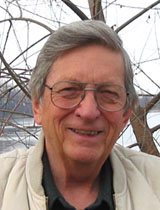A Project with Gary Holthaus, January/February 2010
*Read and download the Report to Sitkans.**
The final Sitka Symposium, Framework: Shaping an Enduring Culture, in 2009, started important conversations and exploration of what needs to change in order for us to shape a culture based on long-term human needs and the well-being of the planet. We wanted to extend that conversation to a broader cross-section of the community and use the humanities to clarify and inform these essential questions.
 To that end, we invited humanities scholar Gary Holthaus to Sitka in early 2010 as our “humanist-in-residence.” He was a faculty member at the 2009 Symposium and had been in meetings with Sitkans over the years since 1972. His project, funded by the Alaska Humanities Forum, began with two of the oldest humanities questions in the world: “Who am I?” and “Why am I here?” Extending those questions out to the community they became, “Who do we want to be in this place? What kind of persons do we have to be to make this place really work for our community and its surrounding environment for the long term?”
To that end, we invited humanities scholar Gary Holthaus to Sitka in early 2010 as our “humanist-in-residence.” He was a faculty member at the 2009 Symposium and had been in meetings with Sitkans over the years since 1972. His project, funded by the Alaska Humanities Forum, began with two of the oldest humanities questions in the world: “Who am I?” and “Why am I here?” Extending those questions out to the community they became, “Who do we want to be in this place? What kind of persons do we have to be to make this place really work for our community and its surrounding environment for the long term?”
Gary conducted 83 interviews with individuals, ran a reading and discussion series, held meetings with various civic, business, and governmental organizations, all to prepare for a culminating public gathering to share his findings.
After leaving, he took time to write his Report to Sitkans and, with support from the U.S. Forest Service, returned to present the report to the community. We hope it yields some of the insight needed to shape and enduring human culture in this special place. Here are two excerpts:
“I believe in the power of stories. The stories I have heard from you about Sitka are important because we may be sure that we grow into the stories we tell ourselves about who we are and what we are about—as individuals and as communities…What Sitkans decide to tell themselves about who they really are and what they aspire to become will determine whether or not you create an enduring culture in this place. One of the great, reassuring characteristics of stories is that they can have transformative power. If we are growing into a story we do not like, we can change the story about who we are and who we would like to become, and we can grow into that better tale. That goes for communities too.”
“What is remarkable and encouraging is this: Sitka is a community that has a great way of disagreeing with itself, and yet going on. From what you have told me, and one of the things I hope this report reveals, is that for most Sitkans the sense of community finally transcends the dissension, and holds sway. It’s what compels you to assist even those with whom you disagree. To me, that is the very essence, the heart, soul, and intelligence of democracy, and one of the absolute essentials for creating an enduring community. Your experiences, and the diverse views of Sitka you have shared, give me powerful reasons to remain optimistic.”
As a post-script to this project, Diana Saverin, a Kinglsey Trust Fellow from Yale University, visited Sitka in summer 2011 to interview residents who had participated in Gary’s study. She produced four profile stories for Raven Radio and one story about Sheldon Jackson Campus, the new home for the Island Institute. These stories continue to explore ideas of community distinctiveness and enduring Sitkan values present among a diverse group of individuals.
Hank Moore: After loss, a sunflower in the rain
Burgess Bauder: Pro bono vet does it “for the dogs”
Herb Didrickson: How speed breaks cultural barriers
Linda Behnken: Mixing love and advocacy on the ocean
Sheldon Jackson: Closure Painful for College Staff, Alumni
